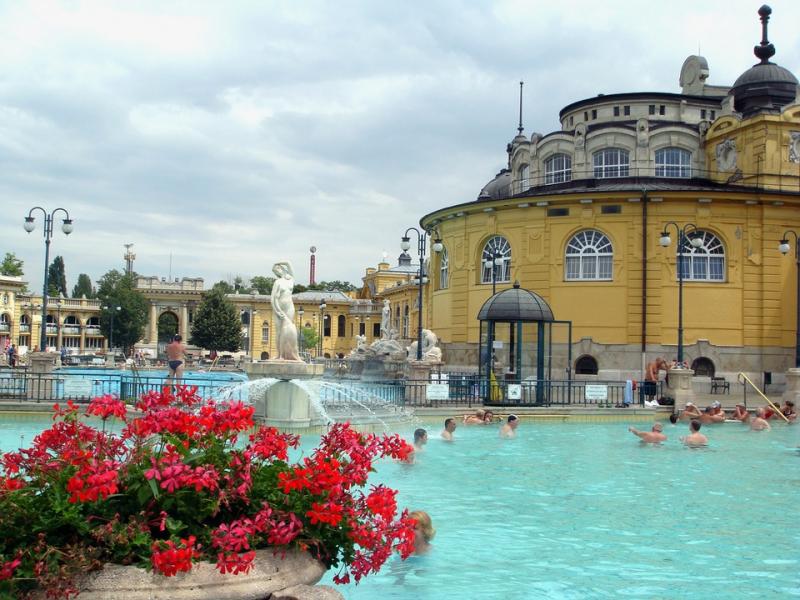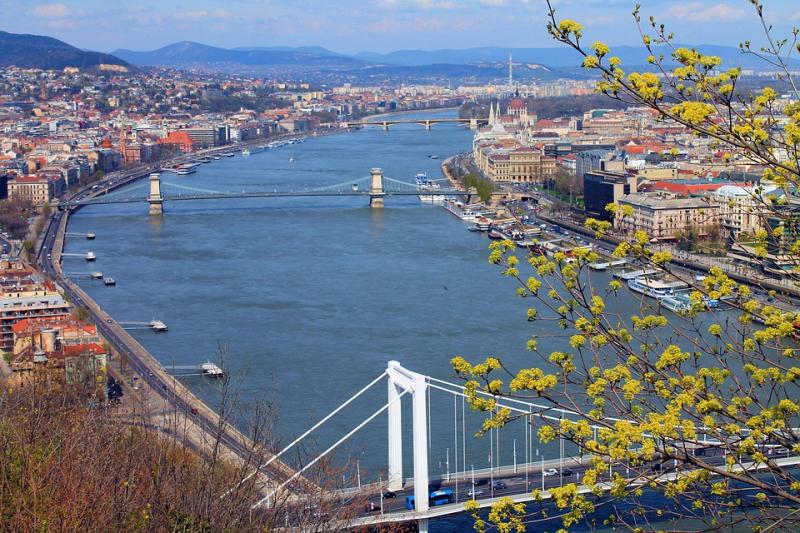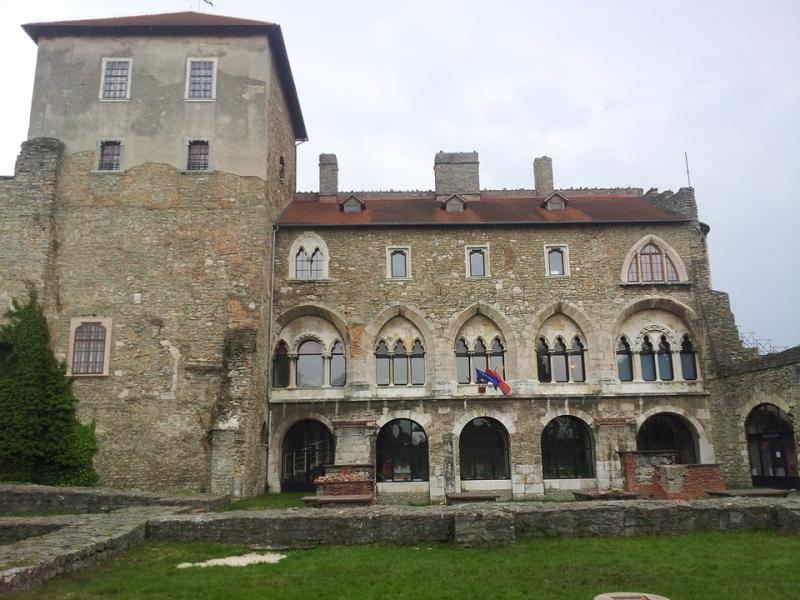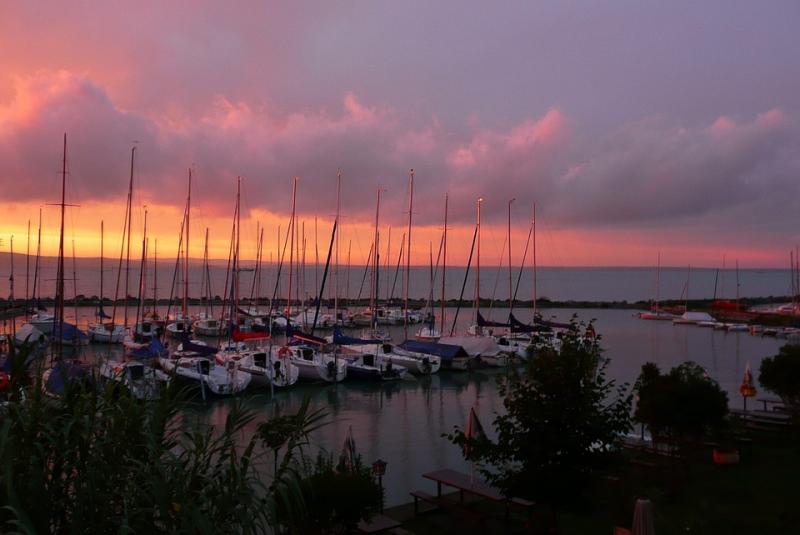
Budapest consists of three different parts: Pest, Buda and Óbuda. Pest is flat and is the vibrant center of the city, containing the main attractions and entertainment venues; while Buda is hilly and more peaceful, with the Castle Quarter as a tourist center.
Óbuda lies a bit further up north, where you can find Roman excavations and lovely waterside scenery lined with several stalls and cafés that are pretty popular with locals.
According to Condé Nast Traveler's Reader Choice Awards 2014 Budapest is the second best city in Europe, only preceded by Florence, and overtaking Prague and Rome. This was partly attributed to the city's spa and café culture. TripAdvisor chose Budapest as the world's best value-for-money travel destination two years in a row in 2013 and 2014 based on 54,000 reader's votes. There is lots to see and do in Budapest and Hungary, depending on the time you have available.
A few Highlights of Budapest
If you only have one day to make this a memorable visit, read 1-day Budapest: The Classics and 1-day Budapest: Chic & Authentic.
In the Castle Quarter
The Royal Palace - that has witnessed wars and occupations from the 13th to the 20th century - hosts the biggest library of the country, the National Gallery and the History Museum.
The finest Gothic structure in Buda - Matthias Church - dates back to the 13th century and was named after the most popular king of Hungary. During the 150-year long occupation of Buda, the Turks used it as a mosque. It is surrounded by the Hilton Hotel (which was built on medieval monastery ruins in the 70s) and the Fisherman's Bastion, which was only ever intended to be purely decorative, rather than protective. Instead, its terraces provide the perfect view over the Pest side. But this grand metropolis isn't only captivating from 180m above sea level – go deeper and explore the underground ‘Hospital in the Rock': a trip to remember.
The Parliament
The Parliament building, one of the largest in the world, is 96m high, which makes it the tallest building in town along with the Basilica. Home to the Hungarian Crown and jewels, this impressive building is adorned with 365 Gothic towers.
The construction took 19 years, and the numbers speak for themselves: more than 40 kilos of gold were used for decoration, inside there are 27 gates and 29 staircases – the about 20 km of stairs lead to over 690 rooms.

Spas of Budapest
Budapest is a spa capital, and in accordance it can boast a huge range of different types of spas from historic Turkish and Roman baths to medical facilities and party spas.
Hippocrates, the father of medicine, was the first to proclaim: "Nature is the physician of our diseases". Mother Nature has been especially bountiful towards Hungary: the country sits on one of the richest geothermal and medicinal water resources in the world. The local culture of bathing dates back two thousand years; excavated remains of bath houses, frescoes and mosaics demonstrate that the Romans discovered and exploited these thermal water resources.
Hungarian water is not just for splashing – it can be soothing too. The country is blessed with an abundance of natural thermal springs, which emerge at a temperature of 86°F/30°C and are full of salts and minerals.

Hungarian springs have supported a bathing culture dating back to Roman times. Whether you're after relaxation, refreshment, rejuvenation or recovery, Hungary will not fail to meet your needs. Many towns have thermal baths of some sort, providing not only the chance to soak away those aches but also to take advantage of massages, saunas and perhaps more advanced treatments such as pearl baths and Kneipp treatments. The water can be used to ease specific medical complaints (including muscular, arthritic, gynaecological and skin conditions) or simply to pamper the body.
The Danube and its bridges

The Danube and its characteristic bridges epitomise the unique beauty of the city. At night, the oldest bridge, named Chain Bridge, shines bright like a diamond necklace, with proud guarding lions watching your every step.
The short Liberty Bridge, with the mythical Turul birds on top, is adorned with hundreds upon hundreds of lights and is often used as a party lounge with fantastic scenery. From Margaret Bridge - which is connected with the Margaret Island in the middle – you can admire the buildings of both Buda and Pest.
Nature in all its dimensions
Budapest is the city of hot springs, caves, islands, rivers, forests, hills and valleys. The chillout hotspot of the town, Margaret Island, sits in the middle of the Danube.
There's plenty to discover: apart from medieval ruins, there are two outdoor pool complexes, thermal hotels, a little zoo, as well as an ultramodern musical fountain. Hiking trails, the cog railway, a chairlift or the Children's Railway, which is operated by children, lead you deep into the Buda hills. Here, the longest cave system of the country can be explored on guided tours. The highest point of Budapest is on top of the Elisabeth lookout tower.
Useful tip
When arriving in Budapest, it is worth investing in Budapest Card which offers unlimited travel on all forms of public transports, free or reduced admission to museums and other sights and discounts on organized tours, car rental, at thermal baths and at selected shops and restaurants. It is sold at Tourinform offices, travel agencies, hotels and main metro stations.
Links to more information
http://budapest.gotohungary.com/budapest-top-10
http://gotohungary.com/sights-of-budapest
http://budapest.gotohungary.com/taste-budapest
http://budapest.gotohungary.com/top-10-parks-and-gardens
Want to know about events? Visit the event calendar.
Around Budapest
Need an idea for a day trip to explore the outskirts while in Budapest? Read the Day Trip Ideas.
Explore Hungary
Castles in Hungary

Hungary has about one hundred castles and ruins of castles all over the country. Hungarian Tourism has selected the best 15, worth it to visit if you have the chance.
Hungary has a very rich historical past. Because of the many peoples in the Carpathian basin and surroundings and the large medieval empires, Hungarians had to build massive castles to protect themselves. Some of these were destroyed through unmerciful battles or sieges, but a couple of them are still standing, and became the marks of the country's heroic and hard past. Now all of them are awaiting visitors.
Explore Hungary's hidden treasures
In 2006 the European Committee launched a project titled European Destinations of Excellence (EDEN) meant to present the diversity of the European continent's natural, cultural and intellectual heritage to tourists. Explore the Hungarian EDEN winners.
Equestrian Parks in Hungary
Where to experience the famous Hungarian horse-culture? Hungarian Tourism suggests five Equestrian Parks. At these places you will find traditional restaurant and hospitality, accommodation, amazing ambience, impressive horse-shows and first class horse riding services. The equestrian parks of Hungary are marked with horseshoes from 1 to 5, qualified - in a nutshell - by their natural ambience, stables (substance, quality and qualification of horses), equestrian services, staff and other programs and possibilities.
Introducing Lake Balaton
Links to more information
http://gotohungary.com/show-me-hungary
http://gotohungary.com/all-sights
http://gotohungary.com/spas-of-hungary
Links to Tour Companies offering adventures
http://www.macsadventure.com/destinations/europe/hungary

